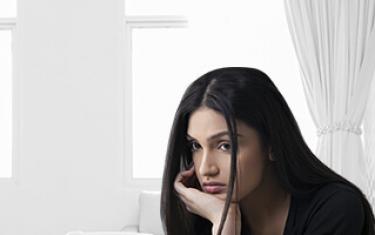Depression Types
A few decades ago, depression would be classified as:
Endogenous: This type is described as one in which there is no external cause for depression; it can be genetic in origin or may be idiopathic.
Neurotic/reactive: This type has an obvious external factor precipitating the condition. Common triggers include the loss of a loved one, end of a relationship, death of spouse, a major setback in life, etc.
Currently, depression is classified into the following types, the first two being the most commonly diagnosed ones:
Major depression: This significantly disables the sufferer and prevents him from functioning normally. It interferes with the person's ability to enjoy activities which he/she once found pleasurable. Major depression can become recurrent or chronic in nature.
Chronic depression (dysthymia): Longer duration (usually more than two years) with less severe symptoms characterise this type. It is less disabling as compared to major depression.
Bipolar depression: Also called manic-depressive illness, patients suffering from this type have episodes of extreme highs (like mania) alternating with extreme lows (like depression). This condition tends to be cyclic in nature.
Seasonal depression (SAD or seasonal affective disorder): Typically, the patient experiences episodes of depression during winter months (when there is less natural sunlight) and it gets better with the onset of spring/summer.
Psychotic depression: When depression is accompanied by the patient getting away from reality and experiencing delusions/hallucinations, it's called psychotic depression.
Postpartum depression: The onset of major depression within a month of delivering a baby is called postpartum depression; it affects almost 10-15% women.
The above types of depression can also be broadly classified as:
Circumstantial or situational depression: Changes in seasons, especially from summer to winter, can cause depression known as seasonal affective disorder (SAD). Situational depression is a short-term form of depression that can occur in the aftermath of various traumatic changes in your normal life, including divorce, retirement, loss of a job and the death of a relative or a close friend. Other situations that can potentially overwhelm your normal coping mechanisms include surviving a hurricane or any other major disaster, surviving a serious accident, experiencing a major illness, and even marriage.
Doctors sometimes refer to the condition as an adjustment disorder. A person with situational depression may have symptoms that are more or less identical to someone with clinical depression; however, there are certain key differences between the effects and treatment of these two disorders.
Hormonal depression: Biological and hormonal changes causes depression, especially in women; postpartum depression being an example. Many new mothers experience “baby bluesâ€Â. This is a normal reaction that tends to subside within a few weeks. However, some women experience severe, lasting depression. This condition is known as postpartum depression. Postpartum depression is believed to be influenced, at least in part, by hormonal fluctuations.






